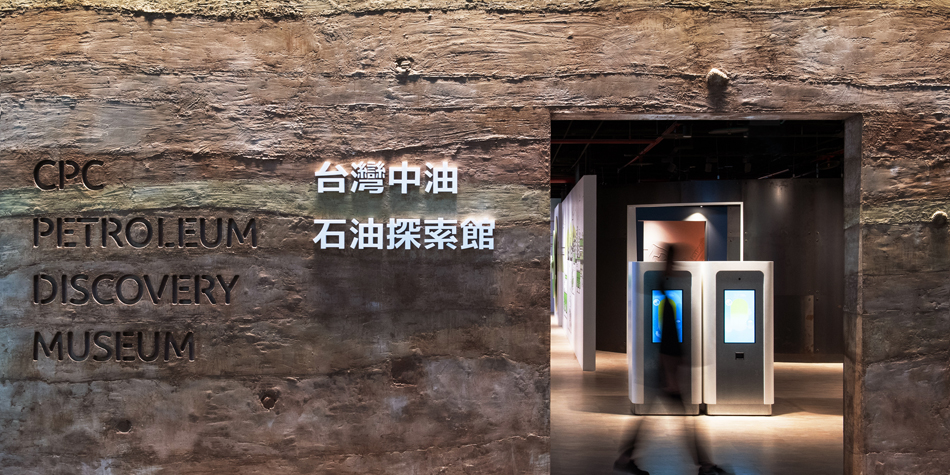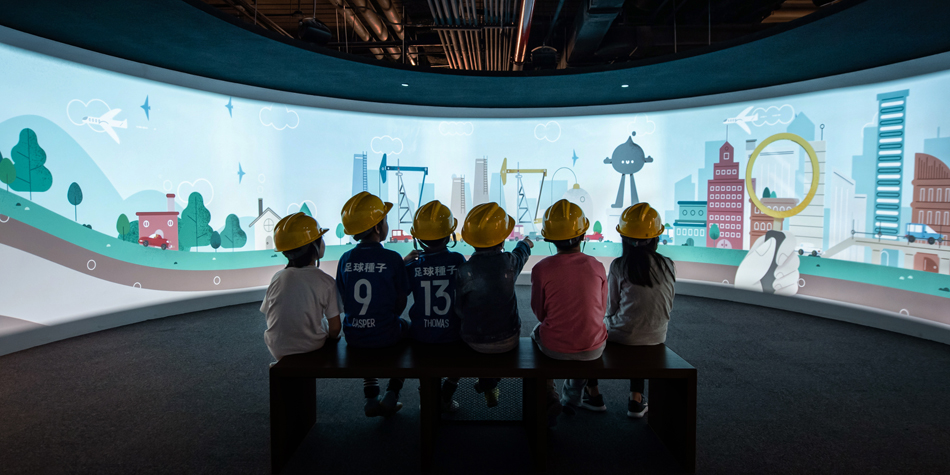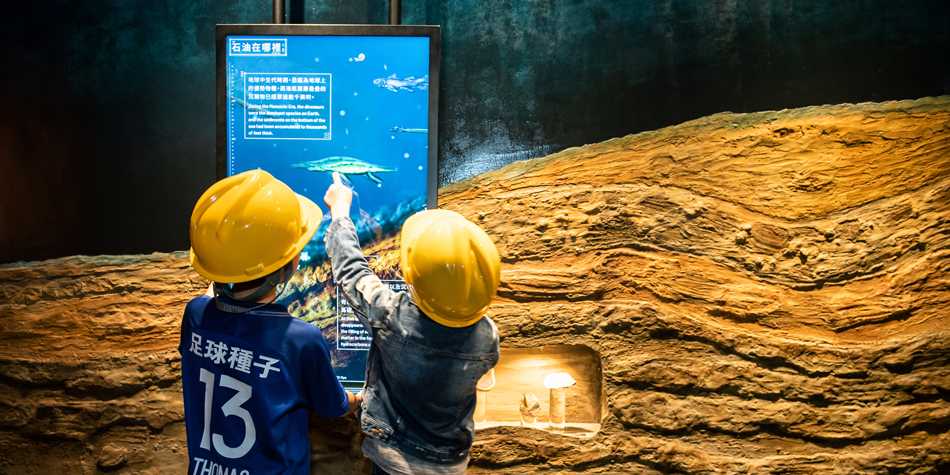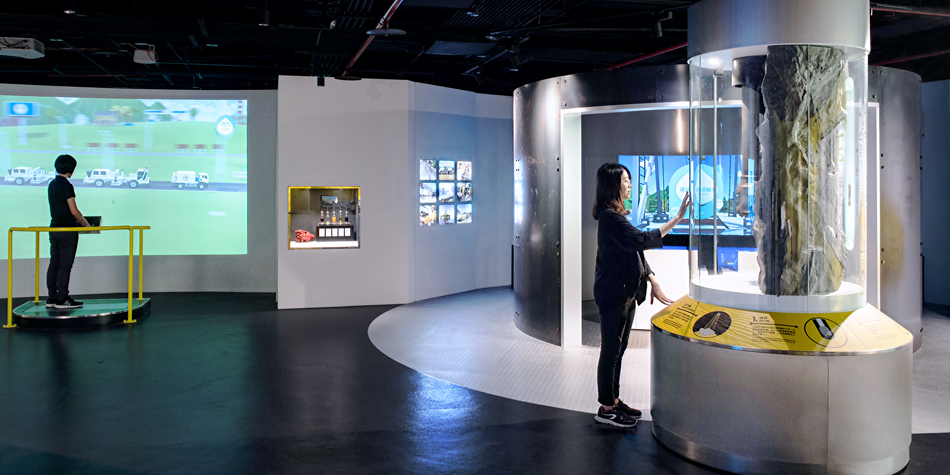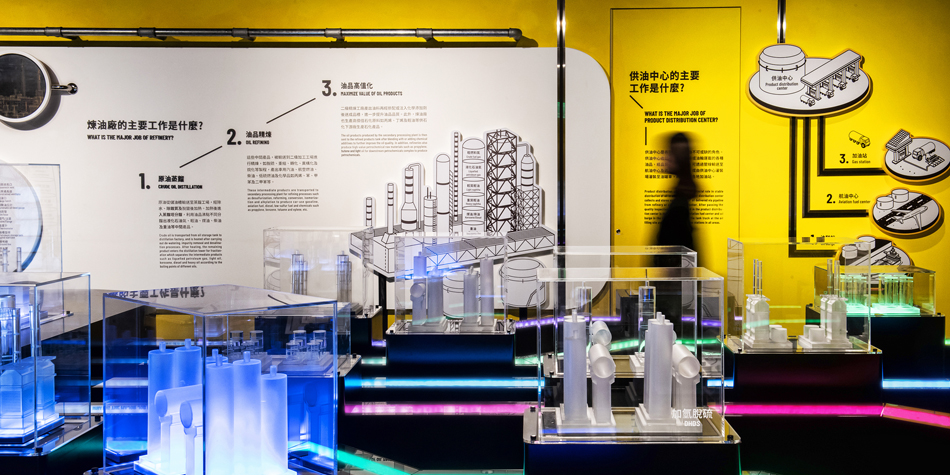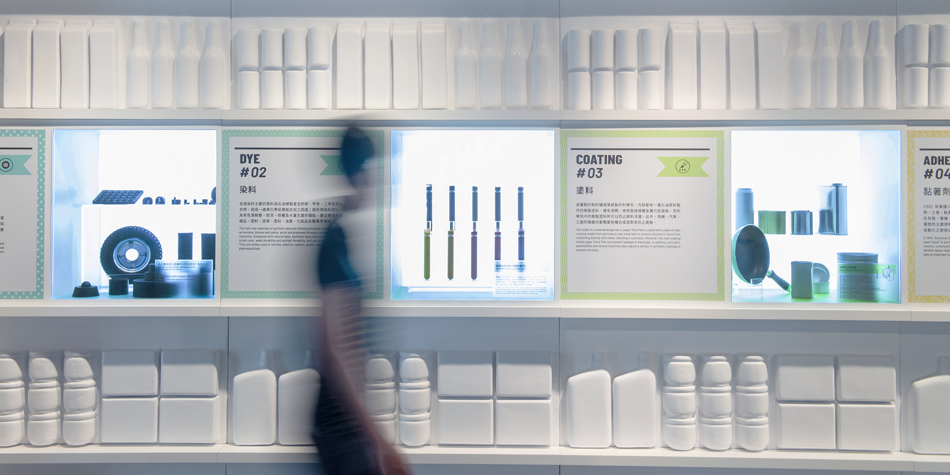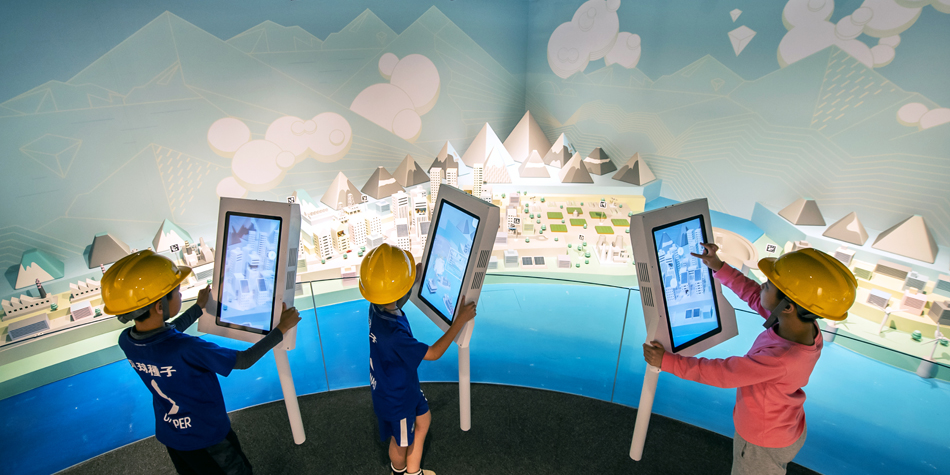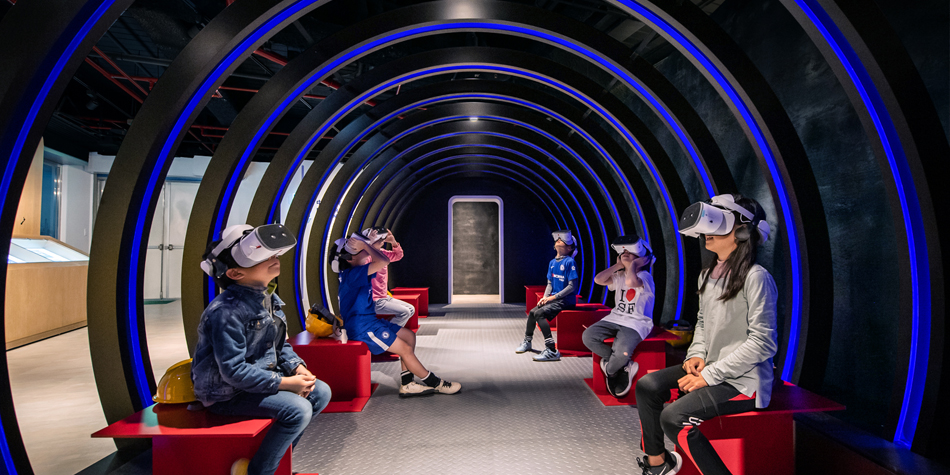CPC Petroleum Discovery Museum
Arts, entertainment, imagination—a dynamic experience of energy exploration
How does petroleum change our lives? How is fossil fuel formed? These are some of the countless questions the Petroleum Discovery Museum inspires its visitors to ask and ponder over as they learn about the interconnected relationship between energy, petroleum, and the environment. The exposed rock walls and metal pipes on the first floor create an inviting atmosphere, enticing its visitors into the underground world of petroleum. Interactive facilities offering unique experiences were also designed for schoolchildren. The second floor of the museum displays a “Modern City of Petroleum” that allows visitors to freely wander through everyday scenarios and discover the applications and possibilities offered by petroleum.
Before entering the museum, schoolchildren can obtain a small card with a QR code printed on it. These cards let schoolchildren be awarded points as they follow the exhibition route and solve petroleum-related questions to become a “petroleum expert.” A 270-degree panoramic theater takes them on an underground journey a thousand meters below the surface; the schoolchildren are accompanied and helped by the character Ouli as they learn the secrets of petroleum. In this underground world of petroleum, the museum has incorporated a visual style reminiscent of Medieval European clockwork for its mechanical theater. Here is displayed the oil mining history of Taiwan and the dangerous mining processes are recreated through the use of practical simulations of a drilling control room. At the end is a machine with marbles which represents petroleum passing through the heating furnace to the distillation tower. The interactive marble machine simplifies the complicated distillation of petroleum into gasoline, asphalt, and fuel.
As visitors enter the “Modern City of Petroleum” and wander through familiar everyday scenarios in their homes, the streets, gas stations, and supermarkets they find themselves surrounded by various petroleum and energy-related signs and symbols. Visitors can experience driving virtual taxis, learn gasoline usage tips at the self-service gas stations, identify petroleum products in the virtual motion-sensing shopping experience in the supermarket, uncover environmental issues, and the applications of renewable energy via the green energy encyclopedia on the interactive screens overlooking the miniature city.
In addition to creating an interactive multimedia experience, the museum creates learning spaces with its special exhibition room and CPC workshop, where energy experts shall be regularly invited to organize educational events. We hope to build an interdisciplinary facility that fuses education and entertainment; we invite visitors to explore the world of petroleum and experience the close relationship between energy and life.





